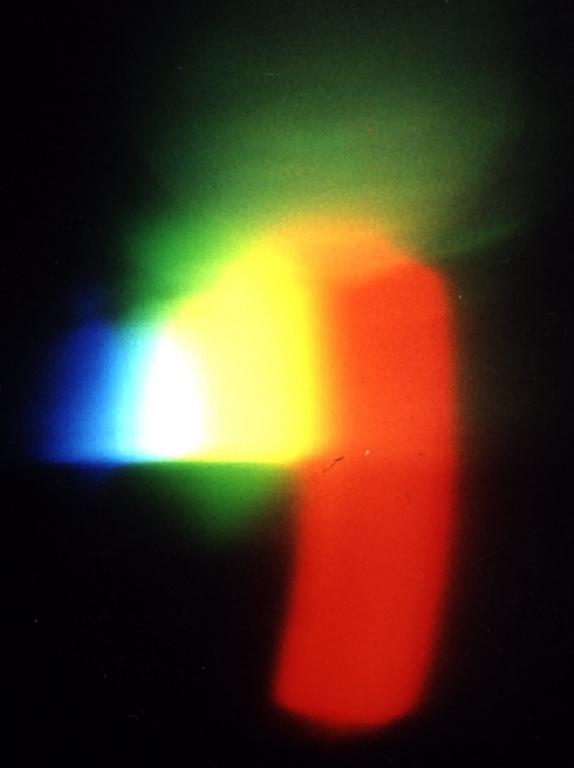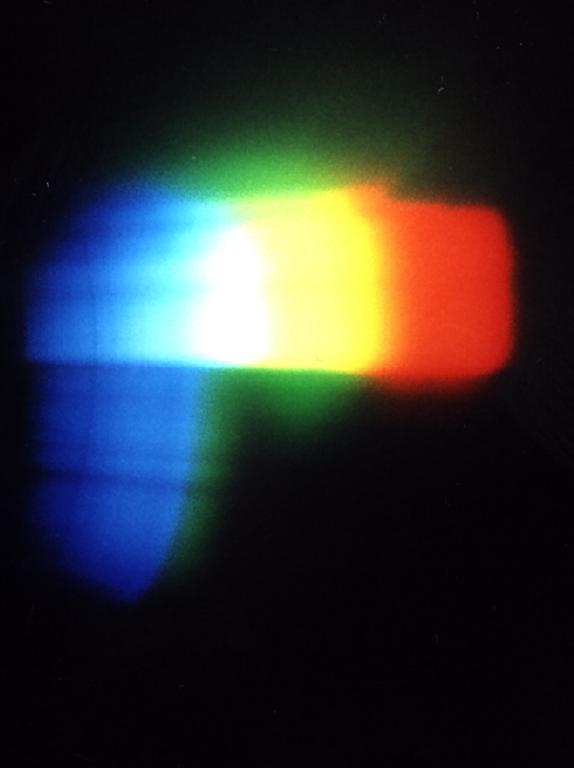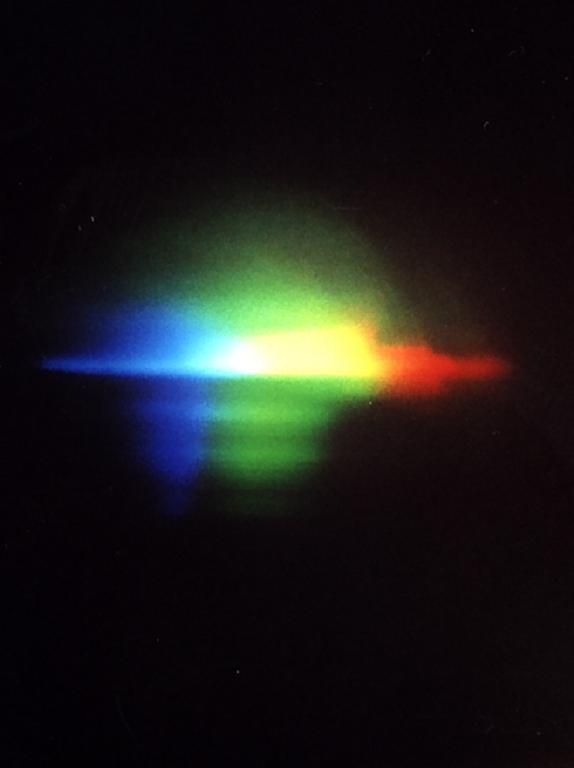



Colour Filters
Joachim Köppen DF3GJ Kiel/Strasbourg/Illkirch May 2004




The top part with the bright solar spectrum is overexposed, and one notes a greenish hazy glare caused by the imperfections of the CD ROM. But note the presence of a few narrow dark absorption lines in the photo with the blue filter. What cannot really be seen well here - because of the limited capability of the colour film to handle a large range of intensities - is that the blue filter does let through a bit of the red portion of the spectrum. The last picture on the right shows the test of a blue filter made from the blue translucent material of the small plastic boxes in which blackberries and raspberries are being sold. Though the filter is rather dark, its rejection of the red light is much better!
What to use as Filters?
Of course one may buy proper filters, either of glass or plastic. But if one searches a bit in the household, one quickly realizes that we are surrounded in our daily life by wonderful material, some of which may serve well as a colour filter. There are many types of transparent or translucent coloured plastic, the question only is how to judge whether it is suitable for the job.
Judging this is quite simple: we use a device like the CD-ROM spectroscope which shows the separate colours which white light is composed of, say from a tungsten bulb. When we hold a colour filter in front of the spectroscope's slit, we see only those parts of the spectrum which the filter lets through. For instance, a red filter would reduce the rainbow colours to the red and orange part. By noting how well a filter suppresses the other colours, we can directly and and easily judge whether the filter performs well or not. A piece of plastic that appears to us red might turn out to let pass through not only red and orange, but also part of the green. It could also be that it is a good filter with a sharp cut-off in the orange, but it also lets pass through a bit of the violet portion ...
Here is a list of material which I came across:
| Top of the Page | back to Main Page | back to my Home Page |